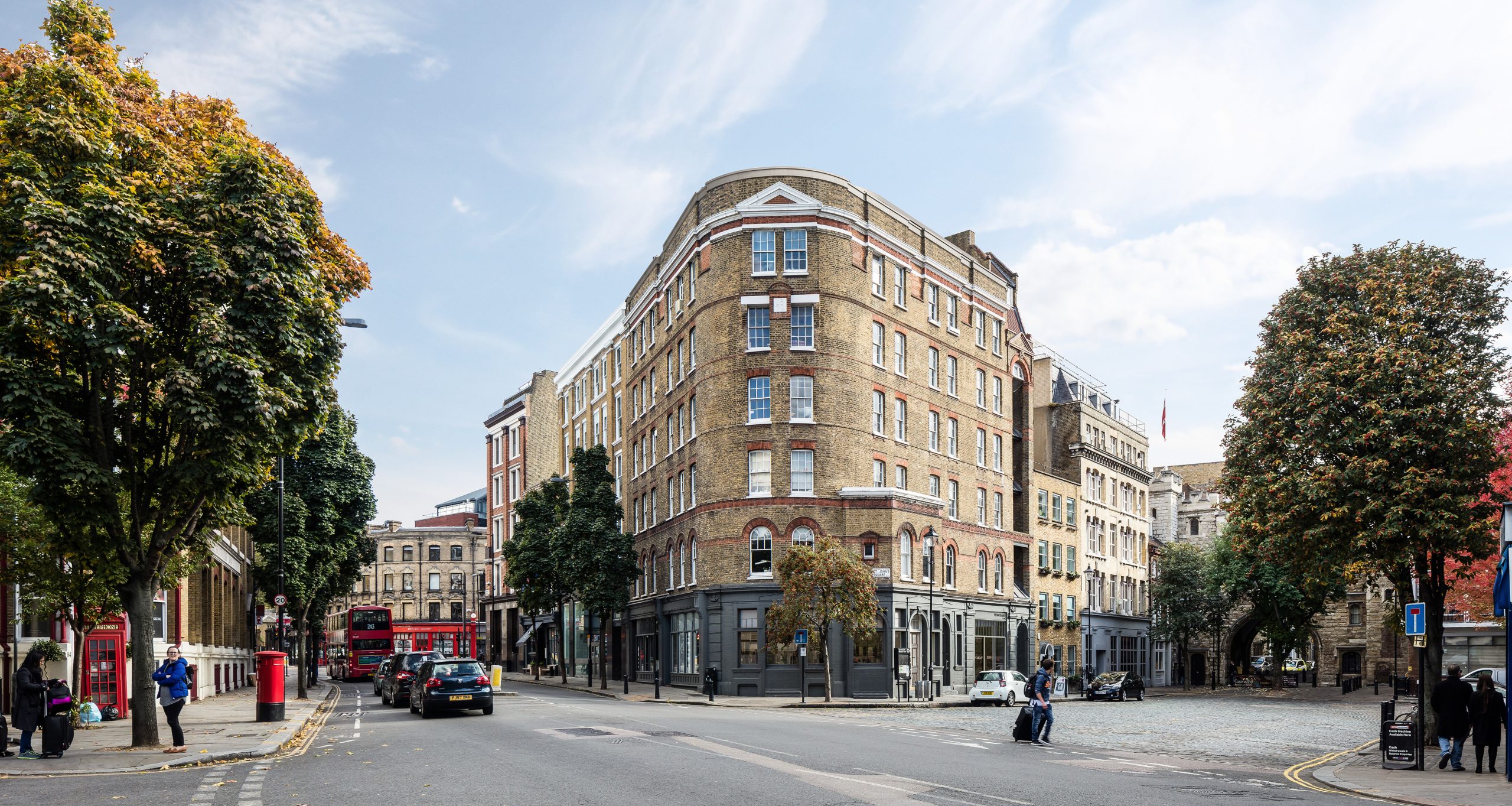
The restoration of historic London building Pennybank Chambers has used a unique underfloor air conditioning system to allow for contemporary office space to be built into the building’s original brick façade. The underfloor system from AET Flexible Space has allowed the new upper office floors to benefit from the fantastic natural light from full height ceilings and the building’s original windows curved around the building. Preservation of the building’s original features was essential because it is located in the Clerkenwell Conservation Area.
The unique underfloor air conditioning (UfAC) system provided by AET makes use of the space beneath the existing 170mm raised access floor void to create the air ventilation path, eliminating the need for ceiling-based services and the associated duct and pipework. This means that floor-ceiling heights can be maximised, and also works extremely well in older buildings where a lowered ceiling would partially obscure the original windows.
Each of the six floors of office space at Pennybank Chambers is supplied with chilled or warmed air via AET’s CAM (Conditioned Air Module) unit. The conditioned air is then delivered into the space using a number of recessed fan terminals (Fantile™). There is a considerable amount of flexibility in where these fan terminals can be placed, allowing for easy reconfiguration depending on the particular needs or layout of an office. The fan terminals fit seamlessly into the new metal tiled floor fitted throughout the 1,037 sq. ft. of office space.
For maximum flexibility each fan terminal is supplied with onboard ‘Fanspeed’ and ‘Set Point’ adjustment, but in meeting rooms and cellular space AET offers Flextouch™ wall-mounted controllers which allow end-users not only to adjust the fan speed and temperature, but also to monitor and control CO2 and humidity levels.
In addition to the refurbishment behind the original façade, the project also added a new fully glazed roof extension and terrace to make use of the exceptional views across the City.
Designed by Charles Henman and William Harrison, Pennybank Chambers was originally built in 1880 by the National Penny Bank Corporation Limited. The rebuild was designed by Emrys Architects, who wanted to preserve the historic façade of the original building, while at the same time delivering light and airy contemporary office space.
